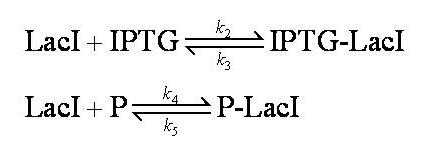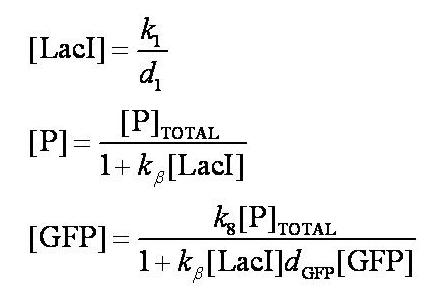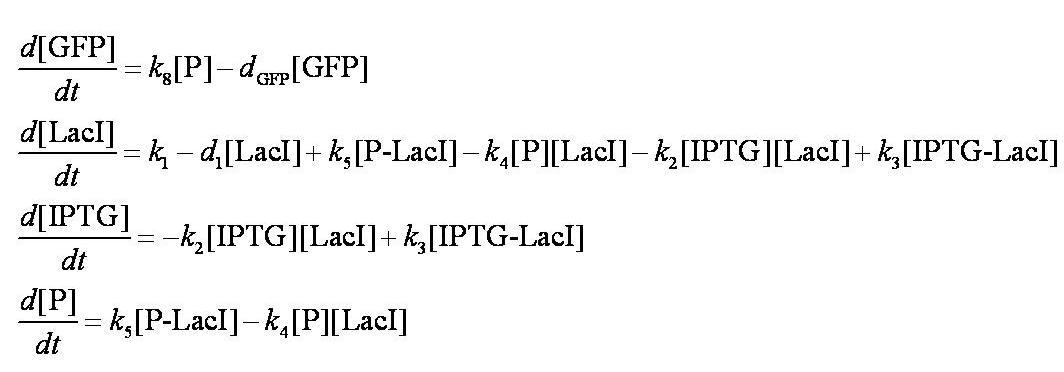Equilibria
Interactions between IPTG, LacI and free promoter and the formation of the promoter-LacI and IPTG-LacI complexes are described using the following equilibria.

Note: 1:1 stoichiometry has been assumed; this model could be adapted to use different stoichiometric coefficients.
k2, k3, k4 and k5 represent binding constants for formation and dissociation of complexes.
Equations
Before IPTG is introduced the system is at steady-state. The steady-state levels of LacI, free promoter, and GFP are given by:

Note: k1 and k8 represent the rate of transcription through the constitutive promoter upstream of LacI and the promoter upstream of GFP respectively.
d1 and dGFP represent the degradation rates of LacI and GFP respectively.
k_beta is defined as k4/k5.
To describe the change in concentration of the interacting species over time we used the following system of differential equations:

These are evaluated numerically using Matlab's ODE solver.
Note from the differential equations above that the steady-state concentration of free promoter will be independent of the concentration of IPTG introduced into the system. The pre-steady-state maximum concentrotion of GFP attained will differ, however - this is illustrated on the page and can be explored further using the simulations
|